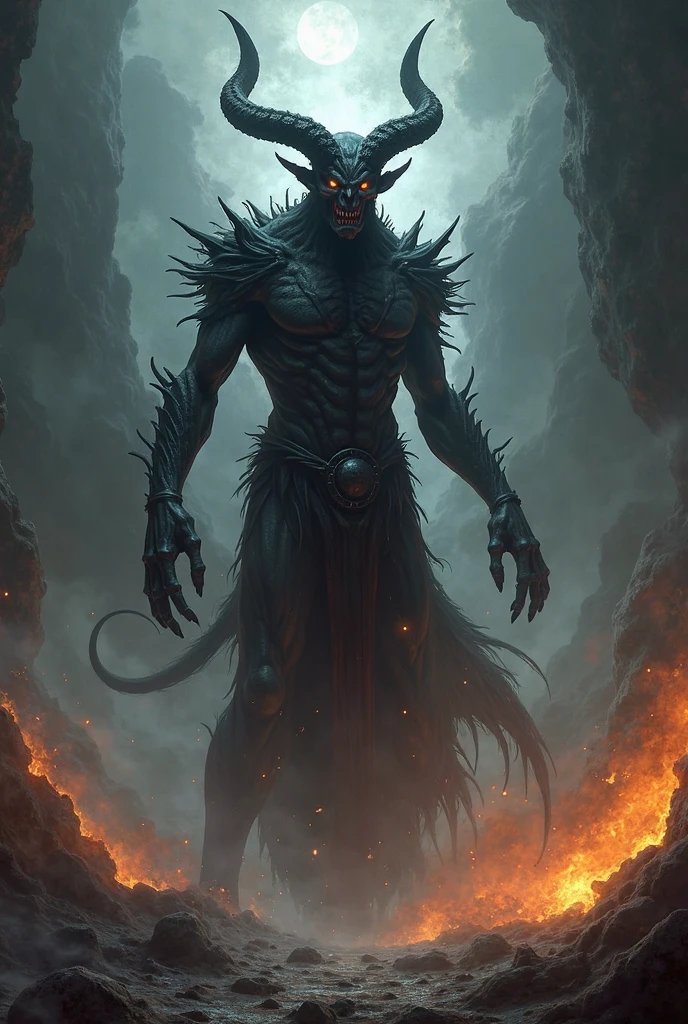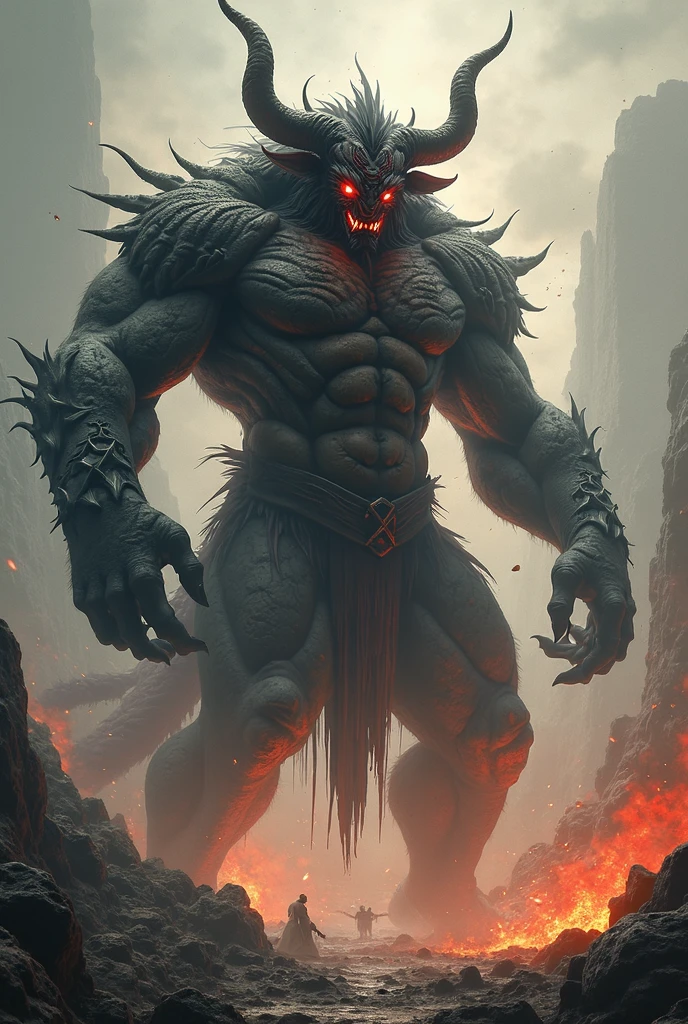The Mysterious World of Rakshasas: Beyond Simple Demons
By Eduardo Gryn, MA in Comparative Mythology
Howdy, fellow mythology lovers! Today we’re embarking on an epic journey through the shadowy realms of Hindu mythology to uncover the truth about Rakshasas. These aren’t your garden-variety monsters – they’re complex, multidimensional beings that have fascinated scholars and storytellers for millennia. Buckle up, because we’re about to explore their origins, their most famous incarnations, their symbolic meanings, and some mind-blowing facts that’ll change how you see these so-called “demons.”
The Origins and Evolution of Rakshasas
Cosmic Beginnings: From Brahma’s Breath to Earthly Plagues
The creation story of Rakshasas is as fascinating as it is bizarre. According to the Vishnu Purana, these beings literally sprang from the breath of Brahma as he slept. Imagine that – the creator god exhales, and poof! An entire race of powerful beings comes into existence. But here’s the kicker: their name comes from the Sanskrit root “raksh,” meaning “to protect.” That’s right – these so-called demons were originally meant to be protectors!
So what went wrong? Well, Brahma took one look at these rowdy new creations and basically said, “You’re fired!” He banished them to Earth, where they developed their more… problematic tendencies. Early Vedic texts describe them as shadowy, nocturnal spirits that interfered with sacrifices – the ultimate party crashers of the ancient world.
The Great Transformation: From Spirits to Full-Fledged Demons
As Hindu mythology evolved, so did the Rakshasas. By the time of the great epics, they had transformed from annoying spirits into powerful demon kings with entire kingdoms at their command. The Ramayana and Mahabharata present them as formidable opponents to gods and heroes alike.
But here’s something that might surprise you: not all Rakshasas were evil. Take Vibhishana, for instance – Ravana’s own brother who sided with Lord Rama because he believed in righteousness. This complexity makes them far more interesting than your typical mustache-twirling villains.
Legendary Rakshasas and Their Epic Stories
Ravana: The Demon King Who Wasn’t Just a Demon
Let’s talk about the big guy – Ravana, the ten-headed king of Lanka. This dude wasn’t just some mindless monster. He was a brilliant scholar who had mastered the Vedas, a devoted worshipper of Shiva (who he supposedly pleased so much that Shiva gave him a magic sword), and a ruler of an incredibly advanced civilization.
His capital, Lanka, was said to be a golden city with flying chariots (vimanas) and technology that would make Tony Stark jealous. But here’s the tragic part – all this power and knowledge was undone by his massive ego and uncontrollable desires. When he kidnapped Sita, he wasn’t just messing with some random woman – he was challenging cosmic order itself.
Hidimba and Ghatotkacha: The Rakshasas
Now here’s a story that’ll warm your heart (sort of). In the Mahabharata, we meet Hidimba, a Rakshasi (female demon) who falls in love with the Pandava brother Bhima. Against all odds, they get married and have a son named Ghatotkacha.
This half-Rakshasa, half-human warrior becomes one of the most loyal allies of the Pandavas in their war against the Kauravas. His death in battle is one of the most emotional moments in the entire epic. What makes this story so powerful is how it shows that Rakshasas weren’t inherently evil – they had the capacity for love, loyalty, and sacrifice just like anyone else.
Lesser-Known But Equally Fascinating Rakshasas
Bakasura: The Human-Eating Giant
This guy had an appetite that would put competitive eaters to shame. A literal man-eater, Bakasura terrorized a kingdom until young Bhima (yes, the same one) took him down in an epic eating contest that turned into a wrestling match. Talk about a strange way to go!
Kumbhakarna: The Sleeping Giant
Ravana’s brother takes the prize for most relatable Rakshasa. This dude slept for six months at a time, only waking up to eat everything in sight before passing out again. When his brother finally woke him up to fight in the war against Rama, he was understandably grumpy.
Shurpanakha: The Scorned Sister
Often portrayed as the instigator of the whole Rama-Ravana conflict, Shurpanakha’s story is actually pretty tragic. When she propositions Rama and gets rejected (and disfigured by Lakshmana), it sets off a chain of events leading to war. Her story raises interesting questions about how women Rakshasas were viewed in these myths.
The Symbolism and Cultural Impact of Rakshasas
More Than Monsters: The Philosophical Meaning
In Hindu philosophy, Rakshasas represent adharma – the opposite of cosmic order and righteousness. But here’s the thing – they’re necessary. Without chaos, there can be no order. Without darkness, light has no meaning. This duality is central to Hindu thought.
When heroes like Rama or the Pandavas battle Rakshasas, they’re not just fighting monsters – they’re restoring balance to the universe. This makes these stories much deeper than simple good vs. evil tales.
Regional Variations: Rakshasas Across India
What’s fascinating is how different parts of India have their own takes on these beings:
- South India: In Tamil traditions, some Rakshasas are seen as protectors of sacred groves and treasures.
- Bengal: The folk traditions often portray them as more mischievous than evil, playing tricks rather than causing real harm.
- Himalayan Regions: Here they’re sometimes associated with yeti-like creatures that guard mountain passes.
Theater and Performance: Bringing Rakshasas to Life
In traditional Indian performing arts like Kathakali and Yakshagana, Rakshasas are often the most dramatically interesting characters. Their elaborate costumes and makeup (usually in greens and reds with bulging eyes) make them visually stunning. Some performances even humanize them, showing their inner conflicts and making audiences sympathize with these supposed villains.
The Science Behind the Myths
Possible Historical Origins
Some scholars suggest that Rakshasas might represent:
- Pre-Vedic tribes who resisted Aryan culture
- Metaphors for natural disasters or diseases
- Psychological archetypes of humanity’s darker impulses
Medical Interpretations
Modern researchers have proposed that some Rakshasa characteristics might describe real medical conditions:
- Ravana’s ten heads could symbolize multiple personality disorder
- Their described “fierce appearance” might reflect genetic disorders
- Sleep conditions like narcolepsy for Kumbhakarna
Curiosities and Lesser-Known Facts
1. The Culinary Habits of Rakshasas
Ancient texts describe some bizarre eating habits:
- Preference for raw meat (especially human)
- Legendary drinking capacity – some could drain entire lakes of wine
- Special hatred for vegetarian sacrifices, which they would disrupt
2. Shape-Shifting and Magical Powers
Their abilities read like a superhero roster:
- Maricha turning into a golden deer to lure Sita
- Some could fly or become invisible
- Power to create illusions and false realities
3. Modern Pop Culture Descendants
Spot the influences in:
- Marvel’s Thanos (the powerful, philosophical villain)
- Star Wars’ Darth Vader (fallen hero turned dark)
- Lord of the Rings’ orcs (brutal warriors serving dark lords)
4. Festival Connections
How Rakshasas live on in celebrations:
- Dussehra’s Ravana effigy burnings
- Kerala’s Theyyam rituals where performers embody demonic spirits
- Bengal’s Dhakater Daemon folk theater
5. Astronomical Links
Some scholars connect Rakshasas to:
- Comets and meteors (seen as omens of chaos)
- The planet Rahu in Vedic astrology
- Certain constellations interpreted as demonic figures
As we’ve seen, Rakshasas are far more than simple villains of Hindu mythology. They represent complex philosophical concepts, reflect historical realities, and continue to inspire artists and storytellers today. Their stories challenge us to look beyond surface appearances and consider the nature of good and evil in our own lives.
—Eduardo Gryn, signing off from the mythic trenches. Until next time, keep questioning the stories we think we know!

